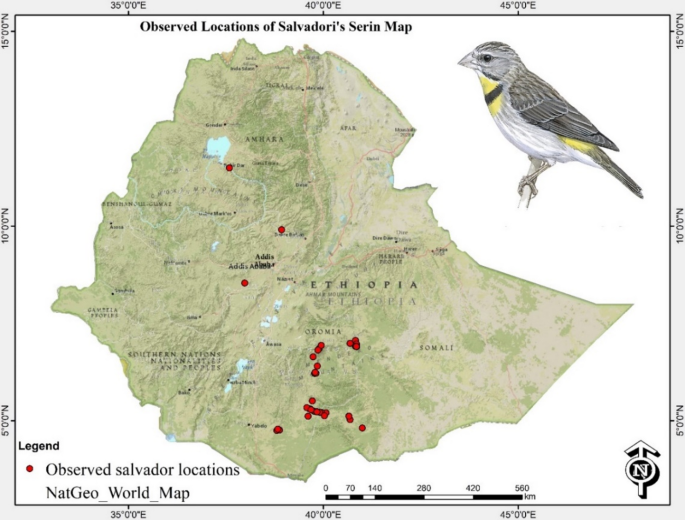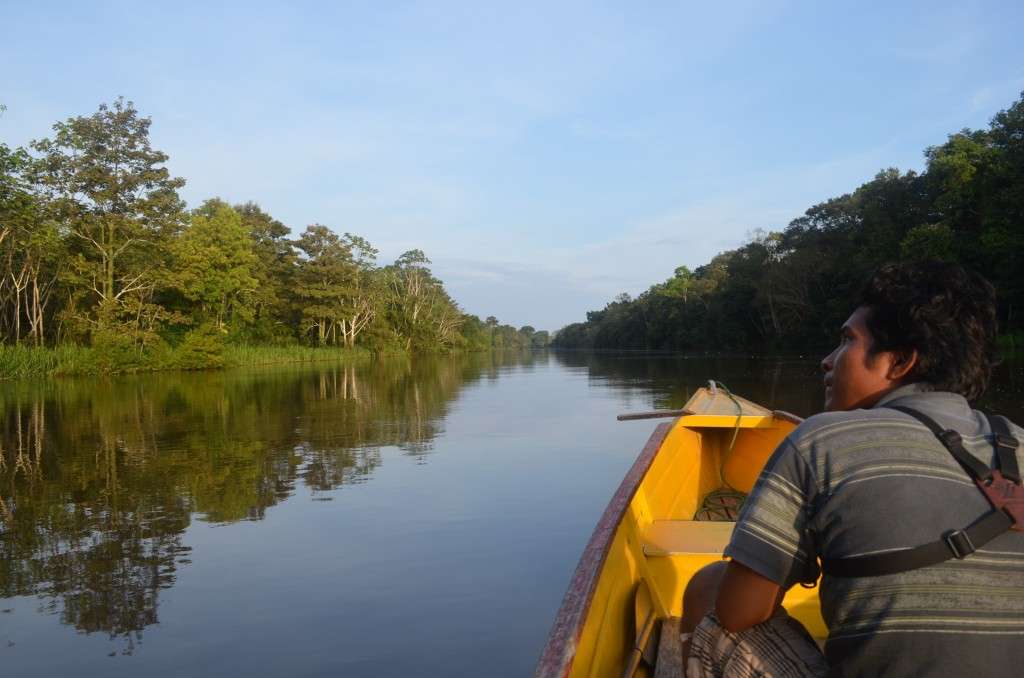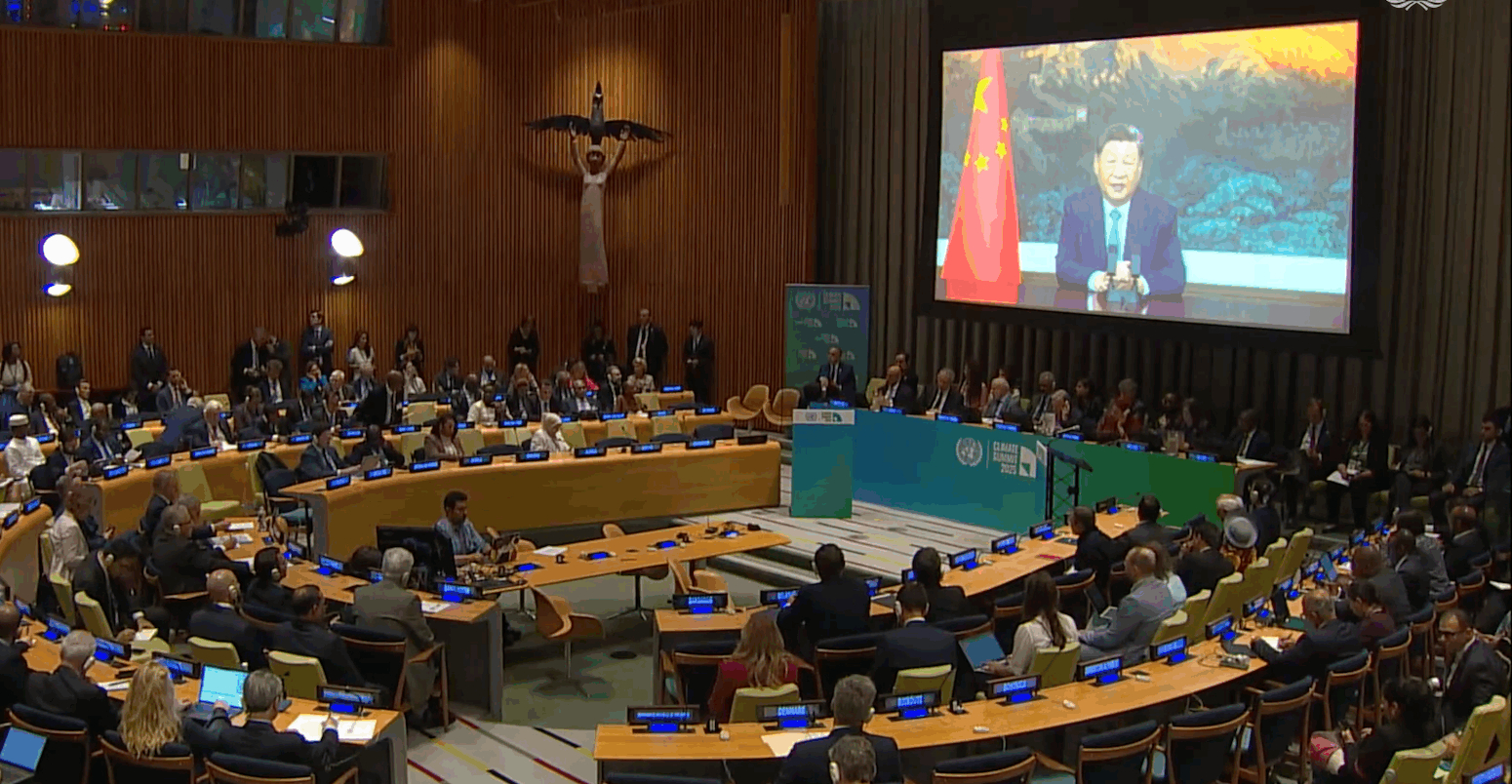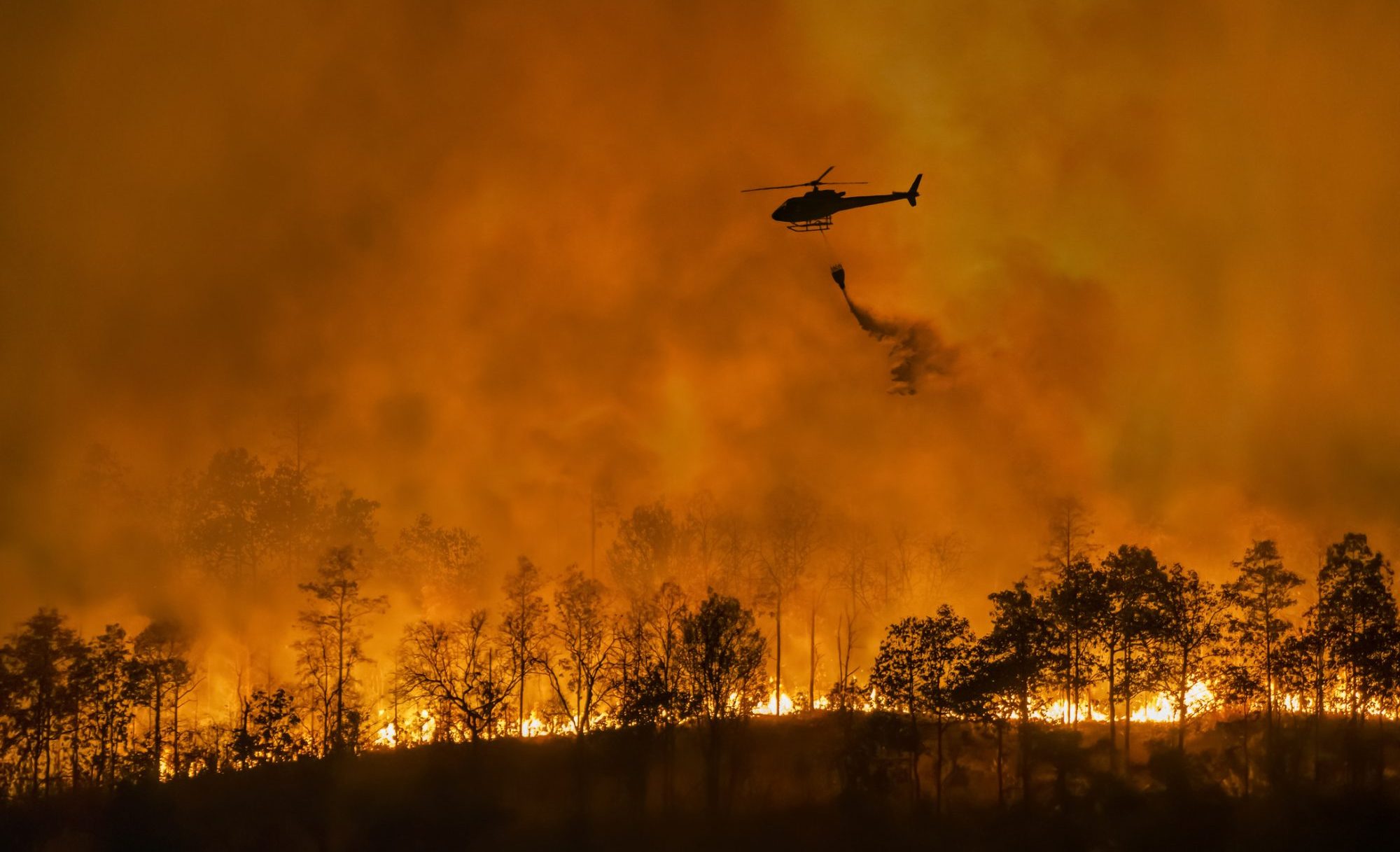Report on Climate Change Impacts on Salvadori Serin (Crithagra xantholaema) Habitat and Alignment with Sustainable Development Goals
Executive Summary
This report details a predictive modeling study on the habitat suitability of the Salvadori serin (Crithagra xantholaema), an endemic and near-threatened bird species in Ethiopia. The study utilizes advanced machine learning algorithms to assess current and future habitat distribution under various climate change scenarios. The findings underscore the severe threat posed by climate change to this species, directly impacting the achievement of Sustainable Development Goal 15 (Life on Land). The projected habitat loss highlights the urgent need for targeted conservation strategies that align with SDG 13 (Climate Action) and are supported by collaborative efforts as outlined in SDG 17 (Partnerships for the Goals).
1.0 Introduction: Biodiversity Conservation and the Sustainable Development Goals
Global biodiversity is fundamental to ecosystem resilience and functionality. However, climate change presents a significant threat, exacerbating habitat loss and fragmentation. This directly challenges the international community’s commitment to SDG 15 (Life on Land), which aims to halt biodiversity loss and protect threatened species. Birds, particularly endemic species with limited ranges like the Salvadori serin in Ethiopia, are highly vulnerable. This study addresses a critical research gap by modeling climate-induced habitat shifts for this species, providing data-driven insights essential for developing conservation policies that support both SDG 13 (Climate Action) and SDG 15.
2.0 Methodology
The study employed a robust, multi-model approach to ensure high predictive accuracy, leveraging global data partnerships in line with SDG 17.
2.1 Species and Environmental Data
- Species Occurrence Data: 188 presence records for C. xantholaema were sourced from the Global Biodiversity Information Facility (GBIF).
- Environmental Predictors: 15 key environmental factors were selected after a multicollinearity assessment. These included:
- Bioclimatic variables (e.g., precipitation, temperature) from the WorldClim dataset.
- Topographic variables (elevation, slope).
- Land Use/Land Cover (LULC) and Normalized Difference Vegetation Index (NDVI) data.
2.2 Climate Scenarios and Timeframes
Future habitat suitability was modeled under two Shared Socioeconomic Pathways (SSPs) from the HadGEM3-GC31-LL model, representing different climate futures and informing strategies for SDG 13:
- SSP245: A moderate emissions and mitigation scenario.
- SSP585: A high-emissions, fossil-fueled development scenario.
Projections were made for two future periods: 2050 (2041–2060) and 2070 (2061–2080).
2.3 Machine Learning Models
An ensemble modeling approach was used, combining the predictions of four machine learning (ML) algorithms to enhance reliability and accuracy:
- Maximum Entropy (MaxEnt)
- Random Forest (RF)
- Support Vector Machine (SVM)
- Extreme Gradient Boost (XGBoost)
Model performance was rigorously assessed using multiple metrics, including AUC-ROC, accuracy, precision, sensitivity, and specificity.
3.0 Key Findings
3.1 Model Performance and Key Drivers
- All ML models demonstrated high predictive accuracy, with XGBoost achieving the highest AUC score (0.99), followed by RF (0.98), SVM (0.97), and MaxEnt (0.92).
- Precipitation during the driest month (Bio14) was identified as the most critical predictor of habitat suitability across all models, highlighting the species’ vulnerability to drought conditions exacerbated by climate change.
- Temperature-related factors and elevation also showed significant influence, confirming the sensitivity of this highland species to climatic shifts.
3.2 Current Habitat Suitability
The current analysis reveals a severely restricted habitat for the Salvadori serin, a critical baseline for measuring progress towards SDG 15.5 (Protect threatened species).
- Highly Suitable: Only 3.9% of Ethiopia’s land area is classified as highly suitable.
- Moderately Suitable: 9.3% of the land area.
- Low Suitability: 11.5% of the land area.
- Unsuitable: A vast 75.3% of the land area is unsuitable.
3.3 Future Habitat Projections and Threats to SDG 15
Future projections indicate a catastrophic decline in suitable habitat, posing an existential threat to the species and jeopardizing the achievement of SDG 15.
- By 2050, highly suitable habitats are projected to decline by an average of 80.8% across both SSP scenarios.
- By 2070, the decline in highly suitable habitats is projected to be 73.2% compared to the current baseline.
- While the total “unsuitable” area is projected to decrease, this is offset by a significant expansion of “low” and “moderate” suitability areas, indicating widespread habitat degradation and fragmentation rather than improvement.
4.0 Implications for Sustainable Development and Conservation Strategies
The findings necessitate urgent conservation actions integrated with national strategies for achieving the Sustainable Development Goals.
4.1 Upholding SDG 15: Life on Land
The projected habitat collapse for C. xantholaema signifies a direct threat to Target 15.5 (take urgent and significant action to reduce the degradation of natural habitats, halt the loss of biodiversity and, by 2020, protect and prevent the extinction of threatened species). Conservation strategies must prioritize:
- Protection of Core Habitats: Secure and expand protected areas in the southern and southwestern regions identified as current and future refugia.
- Habitat Restoration: Implement restoration programs focusing on moist montane forests and key vegetation types to improve habitat quality.
- Ecological Corridors: Establish connectivity between fragmented habitats to facilitate species movement in response to climate shifts.
4.2 Advancing SDG 13: Climate Action
This study provides concrete evidence of climate change impacts at a species level, reinforcing the need for robust climate action under SDG 13. Recommended actions include:
- Integrating species-specific vulnerability assessments into National Adaptation Plans (NAPs).
- Promoting nature-based solutions, such as forest conservation, that simultaneously mitigate climate change and protect biodiversity habitats.
5.0 Conclusion
The application of machine learning models provides a stark forecast for the Salvadori serin, predicting a severe contraction and degradation of its habitat due to climate change. This decline directly threatens biodiversity and undermines progress towards SDG 15 (Life on Land) and SDG 13 (Climate Action). The scientific evidence presented in this report serves as an urgent call for the implementation of targeted, science-based conservation strategies. Protecting the remaining suitable habitats, restoring degraded areas, and enhancing ecological connectivity are critical to ensuring the long-term survival of this endemic species and upholding global commitments to sustainable development.
1. Which SDGs are addressed or connected to the issues highlighted in the article?
SDG 15: Life on Land
This is the most central SDG to the article. The study focuses on the conservation of an endemic and endangered bird species (C. xantholaema), the impact of environmental changes on its habitat, and the broader threat of biodiversity loss. The article explicitly mentions that “global warming has emerged as a serious threat to biodiversity” and that “habitat loss and fragmentation… are significant threats to species distributions and populations.” The entire purpose of the study is to understand these threats to inform “effective conservation strategies,” which directly aligns with the goal of protecting terrestrial ecosystems and halting biodiversity loss.
SDG 13: Climate Action
The article is fundamentally about the impact of climate change on a specific species. It employs climate modeling under two different Shared Socioeconomic Pathways (SSP245 and SSP585) for the years 2050 and 2070 to “understand the impact of climate change on ecological niches.” By projecting future habitat suitability based on factors like precipitation and temperature, the study directly addresses the need to understand and build resilience to climate-related hazards, which is a core component of taking action on climate change.
SDG 9: Industry, Innovation, and Infrastructure
This SDG is relevant through its emphasis on scientific research and technological advancement. The study’s methodology is built on “advanced ML algorithms,” including Maximum Entropy (MaxEnt), Random Forest (RF), Support Vector Machine (SVM), and Extreme Gradient Boost (XGBoost). The article states that these “machine learning techniques… have shown predictive accuracy” and are major instruments for forecasting habitats. This application of innovative technology to enhance scientific research for conservation purposes connects directly to the goals of upgrading technological capabilities and promoting innovation.
2. What specific targets under those SDGs can be identified based on the article’s content?
-
SDG 15: Life on Land
- Target 15.5: “Take urgent and significant action to reduce the degradation of natural habitats, halt the loss of biodiversity and, by 2020, protect and prevent the extinction of threatened species.”
Explanation: The article directly addresses this target by focusing on the Salvadori serin (C. xantholaema), which is described as an “endemic and endangered bird species” and “classified as near threatened.” The study quantifies the “degradation of natural habitats” by projecting that “High-suitability habitats are expected to decline by 80.8% in 2050.” The stated aim is to provide findings that “emphasize the urgent need for conservation strategies to mitigate C. xantholaema habitat loss,” which is a direct call to action to prevent the extinction of a threatened species. - Target 15.9: “By 2020, integrate ecosystem and biodiversity values into national and local planning, development processes, poverty reduction strategies and accounts.”
Explanation: The study’s ultimate goal is to inform policy and planning. The conclusion states the need for “science-based conservation strategies that utilize species-occurrence data to protect habitats.” By providing detailed maps and projections of habitat suitability, the research offers a tool that can be integrated into national and local conservation planning in Ethiopia to protect biodiversity.
- Target 15.5: “Take urgent and significant action to reduce the degradation of natural habitats, halt the loss of biodiversity and, by 2020, protect and prevent the extinction of threatened species.”
-
SDG 13: Climate Action
- Target 13.1: “Strengthen resilience and adaptive capacity to climate-related hazards and natural disasters in all countries.”
Explanation: The article assesses the vulnerability of an ecosystem and its species to climate-related hazards. It models habitat suitability under “two climate change scenarios (SSP245 and SSP585),” which represent different levels of future global warming. The results, showing a drastic reduction in suitable habitat, highlight the low resilience of this species’ ecosystem and underscore the need for adaptive conservation strategies to cope with these climate impacts.
- Target 13.1: “Strengthen resilience and adaptive capacity to climate-related hazards and natural disasters in all countries.”
-
SDG 9: Industry, Innovation, and Infrastructure
- Target 9.5: “Enhance scientific research, upgrade the technological capabilities of industrial sectors in all countries, in particular developing countries…and substantially increase the number of research and development workers…and public and private research and development spending.”
Explanation: The study is a clear example of enhancing scientific research through technology. It explicitly aims to “examine the ability of four machine learning methods (RF, MaxEnt, SVM, and XGBoost)” to predict habitat suitability. This use of “advanced ML algorithms” and “ensemble modeling techniques” in a developing country (Ethiopia) to address a critical environmental challenge demonstrates the application of innovative technological capabilities to advance scientific understanding for sustainable development.
- Target 9.5: “Enhance scientific research, upgrade the technological capabilities of industrial sectors in all countries, in particular developing countries…and substantially increase the number of research and development workers…and public and private research and development spending.”
3. Are there any indicators mentioned or implied in the article that can be used to measure progress towards the identified targets?
Yes, the article mentions and implies several quantitative and qualitative indicators:
- Indicator for Target 15.5 (Red List Index): The article explicitly states that the Salvadori serin is “classified as near-threatened by the International Union for Conservation of Nature (IUCN).” The IUCN Red List Index is a direct indicator (15.5.1) used to track the conservation status of species. The study’s findings, which predict a high “extinction risk” due to “disastrous range reduction,” provide data that could be used to re-evaluate the species’ status on this index.
- Indicator for Target 15.5 (Habitat Area and Suitability): The article provides specific, measurable data on the extent and quality of the species’ habitat, which can be used as a direct indicator of habitat degradation. Examples include:
- Percentage of land area by suitability class: “75.3% of Ethiopia’s land was unsuitable for C. xantholaema, with only 3.9% classified as highly suitable.”
- Projected habitat loss: “High-suitability habitats are expected to decline by 80.8% in 2050, covering approximately 8,259.95 km2.”
- Projected increase in unsuitable habitat: “By 2070, unsuitable habitats may increase to 65.24% (SSP245) and 60.17% (SSP585).”
These figures serve as a baseline and a projection against which future conservation success can be measured.
- Indicator for Target 13.1 (Climate Impact Modeling): The use of different climate change scenarios (SSP245 and SSP585) to model future impacts is an indicator of a country’s capacity to assess climate-related risks. The outputs of these models—the projected changes in habitat suitability for 2050 and 2070—are themselves indicators of the ecosystem’s vulnerability to climate change.
- Indicator for Target 9.5 (Application of Advanced Technology): The successful application and evaluation of multiple machine learning models (MaxEnt, RF, SVM, XGBoost) is an indicator of technological capability in scientific research. The performance metrics used to assess these models, such as “AUC (0.99),” “accuracy (0.96),” and “kappa (0.92),” quantify the effectiveness of these innovative tools in an ecological context.
4. Create a table with three columns titled ‘SDGs, Targets and Indicators” to present the findings from analyzing the article.
| SDGs | Targets | Indicators |
|---|---|---|
| SDG 15: Life on Land | 15.5: Take urgent action to halt biodiversity loss and prevent the extinction of threatened species. |
|
| 15.9: Integrate ecosystem and biodiversity values into national and local planning. |
|
|
| SDG 13: Climate Action | 13.1: Strengthen resilience and adaptive capacity to climate-related hazards. |
|
| SDG 9: Industry, Innovation, and Infrastructure | 9.5: Enhance scientific research and upgrade technological capabilities. |
|
Source: nature.com







